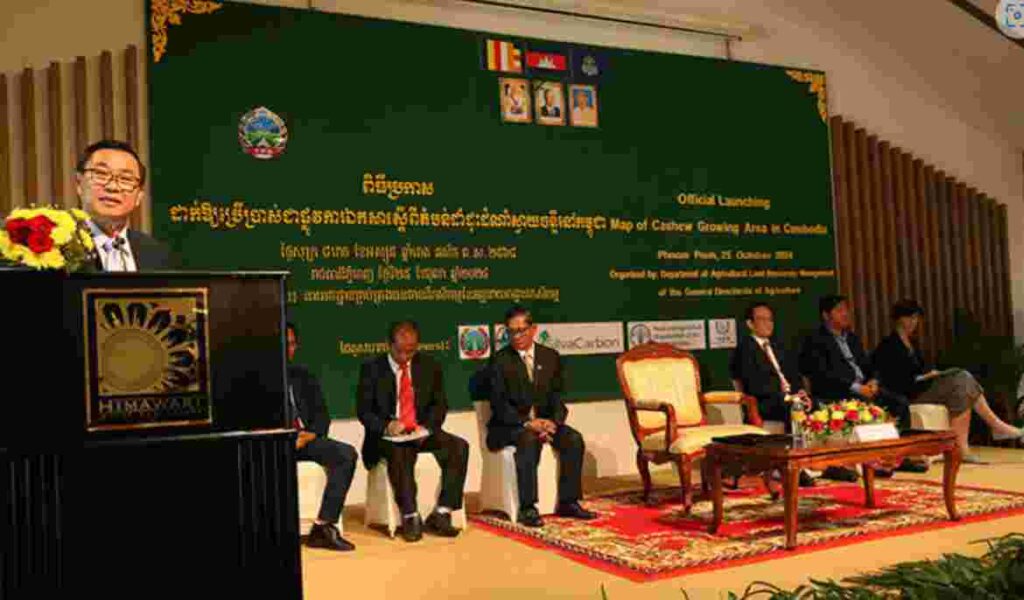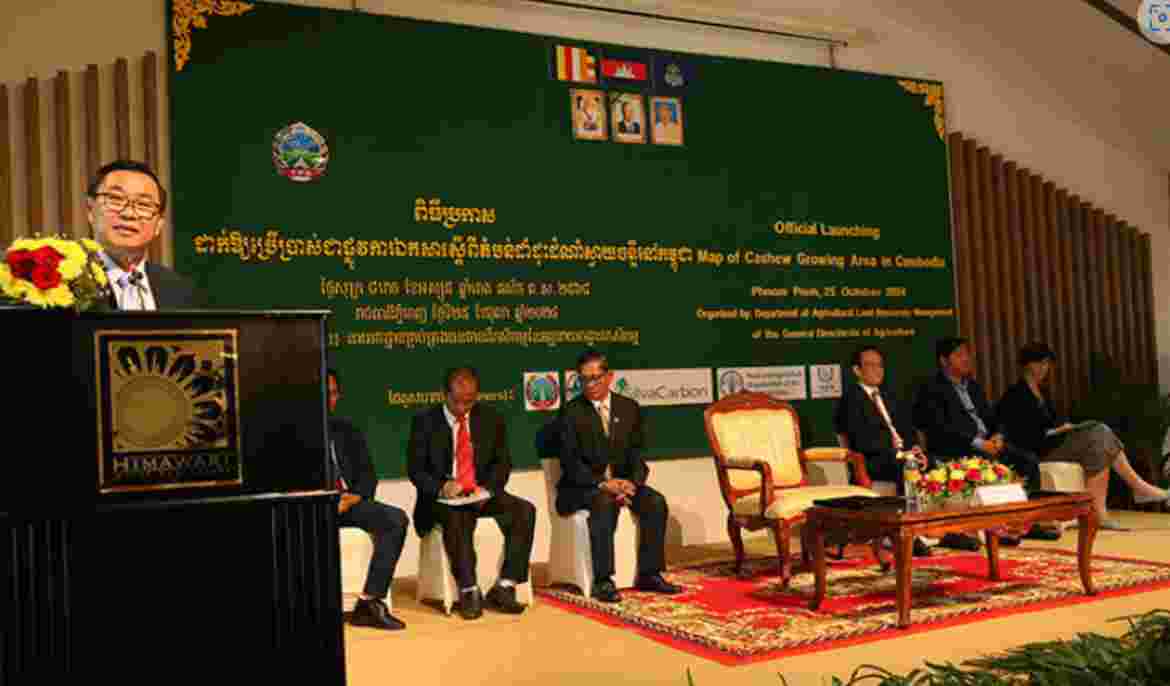Cambodia with an estimated 580,117 hectares of cashew cultivation ranks third in the world for the cultivated area of the crop, a senior official of the Ministry of Agriculture, Forestry and Fisheries (MAFF) said recently.
Ngin Chhay, Director General of the General Department of Agriculture, said this during the official launch of the document ‘Cashew Growing Area in Cambodia 2024’ on Friday.
He said that diverse data from various sources and different methods have been used to make the assessment.
Since early 2021, a team from the Department of Agricultural Land Resources Management at the General Department of Agriculture has collaborated with national and international experts to enhance its technical capabilities through machine learning and artificial intelligence (AI), Chhay noted.
They successfully applied Convolutional Neural Networks (CNNs) to create maps of Cambodia’s cashew plantations.
“Cambodia’s cashew crop has a long life, and this figure demonstrates that Cambodia ranks third in the world in cashew cultivation,” he added.
Among the provinces, Kampong Thom has the largest cultivated area – approximately 147,700 hectares – followed by Kratie with 102,500 hectares and Ratanakiri with 97,200 hectares.
“I urge all stakeholders to use this data officially at both the provincial and national levels. The General Department of Agriculture will continue to monitor and evaluate changes in cashew cultivation areas and produce maps for other priority agricultural sectors using the satellite technology,” he added.
Touch Bunhour, MAFF Secretary of State, remarked that the map reflected the potential of the cashew crop in the country and the value addition. He noted that cashew is a high-potential industrial crop for Cambodia, recognized in the market for its quality, taste, size and traditional varieties.
The provinces that cultivate most cashew include Kampong Thom, Kratie, Stung Treng, Siem Reap, Kampong Cham, Oddar Meanchey, Mondulkiri, Ratanakiri, Preah Vihear, Tbong Khmum and Kampong Chhnang.
“The satellite map succeeded in addressing the challenges we faced in accurately determining agricultural land data including that of cashew plantations,” Bunhour stated.
He explained that visual assessments and interviews have proven inadequate for accurate data collection. Consequently, the Department of Agricultural Land Resources Management has studied cashew cultivation areas using satellite for three years, meticulously verifying updates on cultivation.
“The map launched today may not be 100 percent detailed, but it is highly accurate and aligns with the Royal Government’s policy to prioritize cashew as a key crop alongside rice,” Bunhour said.
He added that the Ministry of Agriculture will work with local authorities and provincial departments to verify annual changes in cultivated areas.
Uon Silot, President of the Cashew Nut Association of Cambodia, who attended the launch event, emphasized the importance of cashew as a priority crop.
Silot also expressed satisfaction with the introduction of the new map, stating that previous efforts by other organizations lacked the technical accuracy provided by MAFF.



